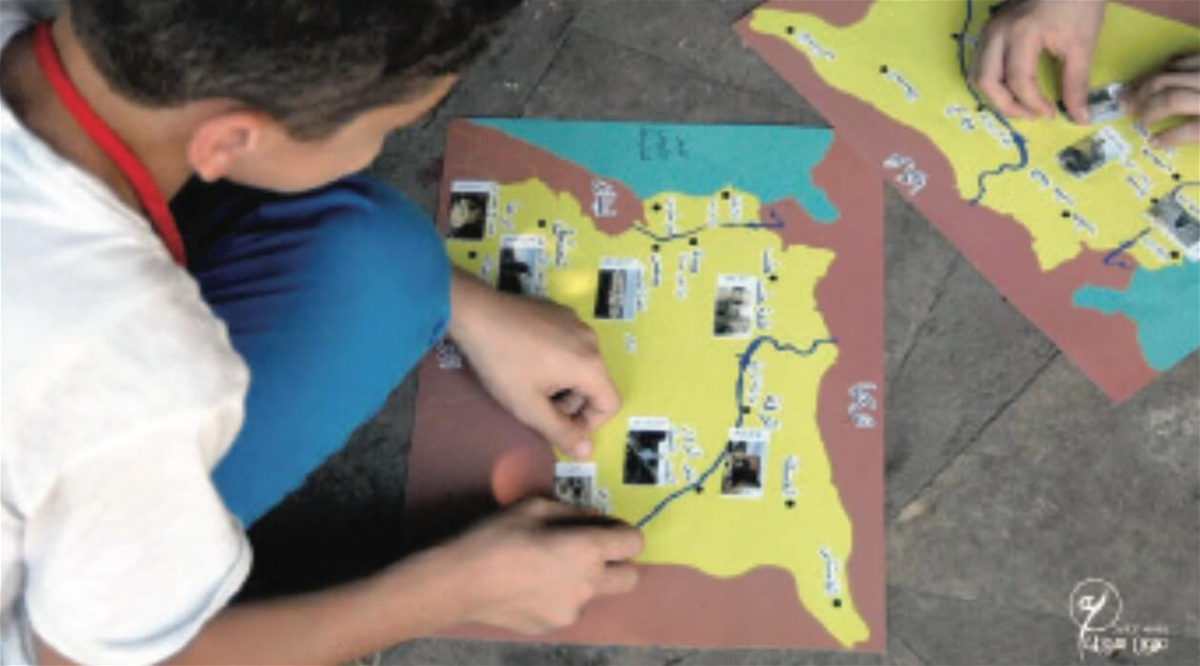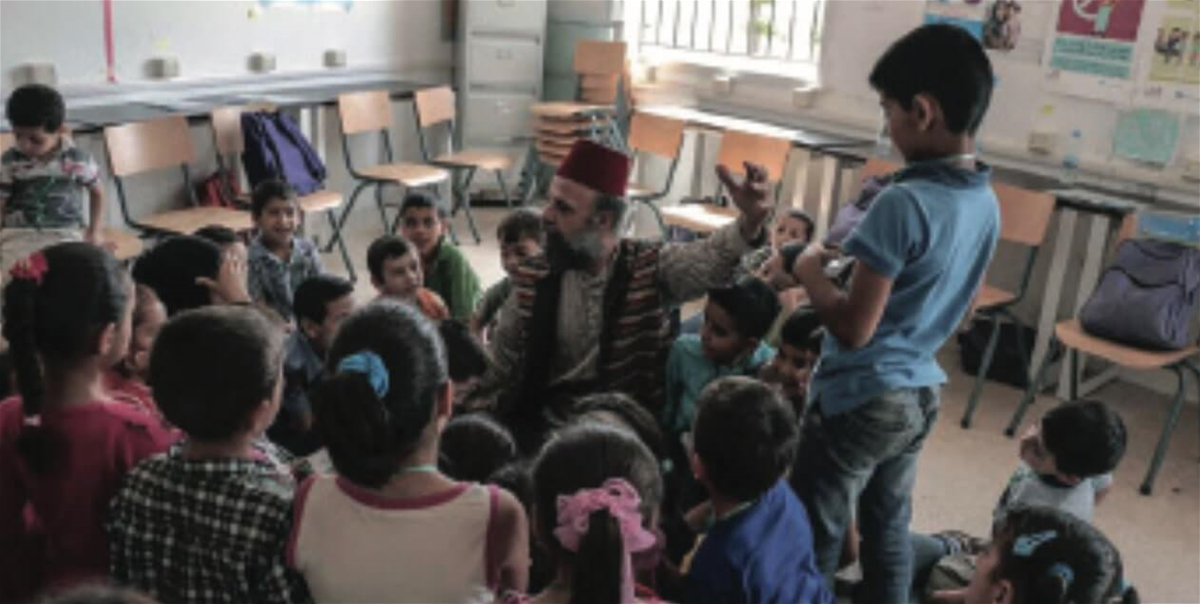This is Biladi’s second project in Lebanon with Syrian refugees. The first, «Syria in my mind 1», was carried out on one day in each school. It was considered the world’s first project on Syrian heritage with Syrian refugee children.
The trainers were selected by the Syrian Eyes team; they underwent an intensive, two-week training course on teaching heritage, interacting with children, and education through games. They were trained by a team of people specialized in education, psychology, archaeology, history and heritage, and also received life-skills training.
The project involves a number of extracurricular educational activities. These are aimed at creating images of Syria, the mother country – free of war and destruction – in the mind of the youngsters. In addition, it aims at defining the youngsters’ Syrian identity and boost their sense of national belonging by using heritage – one of the components of the identity of any people. As for Syrian refugee children in Lebanon, they fall into two categories: one doesn’t know Syria at all, while the second has only memories of the country.

Carrying out the activities
The project was carried out by creating a group of games that constituted, over four consecutive days, a journey to Syria’s heritage. A large map of Syria was especially designed for these young people, based on their ages. They would sit on this flag and became acquainted with its geography through the basic features of their country, such as mountains, rivers, plains and the steppe (badiya). They marked each category with a certain color and took trips between the cities they belong to, by pushing a small car over the map.
In addition, pictures of plants and animals indigenous to Syria were posted on the map, each in the appropriate region of the country. Six archeological sites were also identified ahead of time, so that the participants could become acquainted with during the four days.
The children have, for example, built a model of the Citadel of Aleppo and al-Husn castle, by using wooden blocks and cardboard foundations. They sat on two maps – one of Old Damascus and the other of Palmyra, and learned about the details of these two cities. They learned everything about the waterwheels of Hama from a wooden instructional model.
This information was reinforced through educational games that the youngsters participated in, such as Bingo, which contains pictures of Syrian archaeological sites, or hopscotch with pictures of the Syrian fauna.
We can’t speak of Syria’s heritage without mentioning the hakawati, dressed in his finest Damascene traditional clothing and roaming throughout all of Syria’s provinces and its most beautiful locations, relying on two characters – karakoz and iwadh – whose stories are full of jokes and humor.
The difficulty facing this activity was the inability to see or visit the various locations; instead of a trip there was a ten-minute video that talked about Syria and its ruins, and some of the country’s traditions.
Each day concluded with everyone’s favorite activity, namely singing and dancing; the lyrics of songs with old-fashioned melodies were modified to better suit the program’s objectives.
Youngsters respond to the project and the objectives
Mohammad, a child from Aleppo, told one of the trainers: «When I go back to Aleppo I’m going to take a picture of myself at the Citadel and send it to you.»
After all of this preparation, there was considerable fear that the project would be tough on youngsters; in fact, the opposite was the case. They responded enthusiastically and repeated the songs ever since the first day. They were very happy and asked their parents about what they had heard about Syria, and whether everything that they were told – about Syria’s ruins, the heritage and natural settings – was true.
One of the teachers from AVSI told us that «after the program ended, all of the examples from the lessons that the children talked about involved the Citadel of Aleppo, the waterwheels and other stories and information, which they received via the games and the maps.» «This was very positive for us,» the teacher added. «We tried to take advantage of this in educational terms and derive from the project ideas about Syria in order to enrich our lessons.»
As another teacher put it, «the children came to introduce themselves based on the area they come from (in Syria), after they previously mentioned the name of the Lebanese village they were born in. In fact, they’ve become more cognizant of the place to which they belong after it was obscure to them, and wracked by war.»
Meanwhile, the project had a huge impact on the trainers; they wanted to see it expand and they wanted to return to Syria one day and see children take part in it when the war ends.
At the end of the four days, some of the youngsters in each center would come to us and tell us that when they return to Syria they will visit Ugarit in Latakia or the Citadel of Aleppo, ride camels in Palmyra, or swim near the waterwheels of Hama. They have begun to think more about what distinguishes the apples of Damascus from those elsewhere.
«The project had a big influence on my memory as a Lebanese,» said one of the supervisors from AVSI at its conclusion. «I ended up wanting to get to know Damascus, Aleppo and other Syrian cities. How can I imagine the extent of the project’s impact on youngsters?»

